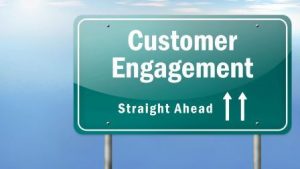— July 28, 2019
An omnichannel approach can help retail-based retailers in a number of ways. Studies show that businesses who adopt this approach have customer retention rates 91 percent higher than competitors who do not.
In short, an omnichannel approach allows retailers to engage with consumers on a variety of different platforms via a number of touchpoints. The main concept behind omnichannel commerce is providing consumers with a seamless retail experience.
The main goal when developing such a strategy, should have agile principles to make it a success. The main component behind a successful gile omnichannel commerce strategy is collaboration and flexibility.
The following three things to keep in mind when bringing agile methodologies to an omnicommerce venture; include:
The right technology goes a long way
When products are offered on different social media channels and websites, retailers need to leverage the right technology to help. The last thing retailers need is for a new customer to order an item that is actually out of stock. Not only will this lead to the customer getting angry, it can also affect brand reputation.
This is why adopting the right technology is crucial when trying to adopt an agile approach to retail management. Often times, there is a need to find a distributed order management program to ensure inventory stays accurate.
How distributed order managed software works
Using a distributed order management (DOM) system allows retailers to collect orders for various channels. These orders can be sourced and shipped based on rules the retailer puts in place. A DOM system makes decisions on the routing of the order based on factors like the location of the supply chain, customer service requirements and the lowest cost of delivery.
With a DOM system, retailers can have a real-time data hub to use for filling and tracking order. All of the orders a retailer receives will be placed in one easy to use dashboard.
Making sales forecasts more accurate
A successful omnichannel retail strategy will also require sales forecasts to be more accurate. The more people seeing products online, the higher the risk of running out of inventory will be. This is why taking preventative measures to ensure this doesn’t happen is vital.
One of the best ways to do this is for retailers to invest in sales forecasting software to help. Figuring out what items are selling and how many they need to order to meet rising demand is crucial.
The main goal when adopting an agile omnichannel strategy is to reduce the time it takes for a product to get into the hands of a consumer. By increasing the accuracy of sales forecasts, retailers can reduce the overall time it takes for a consumer to get the product they want.
Factors that affect the accuracy of a sales forecast
The main factor that affects the accuracy of a sales forecast is how the customer finds and buys the product. For instance, if a consumer finds a piece of clothing in an online catalog being used by a retailer with an omnichannel strategy, they should be able to reserve this item at the store near their location.
Generally, online consumers want those close to them to know about the great deal they just received on their new clothing. Sharing the link to this piece can lead to the sale of this item spiking.
In this example, the consumer used the company’s website, their physical location and even used social media to spread the word about the item they purchased. With an omnichannel approach, retailers can easily track the actions of their audience and use this information to improve the accuracy of their sales forecast.
Educate employees about in-store fulfillment
An integral part of an omnichannel retail strategy is getting employees to buy-in to this new approach. Often times, it is the in-store staff that will be fulfilling orders consumers place online. Without adequate training, an employee may make mistakes or get overwhelmed. The last thing retailers want is for mistakes to be made with a new customer due to a lack of employee training.
This is why retailers need to dedicate both time and money to providing employees with in-depth information about order fulfillment. The agile methodology hinges on collaboration, which is why adequate employee training is so crucial.
Members of senior management also need to ensure they understand the new omnichannel approach and what their responsibilities are.
Factors to focus on
The first thing a retailer needs to do when training employees on in-store fulfillment is to teach them about picking items in an efficient way. Showing the employees how to pick a batch of orders at one time is important. This work should be done when traffic in the store is low. Assigning employees to either front counter or fulfillment work can also minimize confusion.
Having a dedicated packing station for the orders is also important. This station should be stocked with things like boxes, envelopes, scissors and other packing supplies. A retailer needs to develop a packing template for employees to use. This will keep their packaging consistent across various fulfillment channels.
Adopting an omnichannel approach takes time
Having overnight success with a new omnichannel retail strategy is nearly impossible. Instead of getting impatient, retailers need to work on putting the right elements in place to ensure long-term success. Failing to properly prepare for this new retail approach may lead to mistakes being made and money being lost.
Business & Finance Articles on Business 2 Community
(47)







